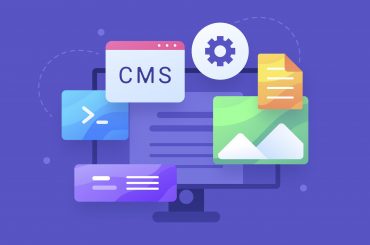How to build an eCommerce website from scratch in Magento?
Last Updated | August 22, 2023
Table of Contents
In today’s rapidly evolving digital landscape, establishing a strong online presence is not just a luxury but a necessity for businesses of all sizes. Building an ecommerce website from scratch can seem like a daunting task, but with the right platform and guidance, it becomes an achievable goal that can bring immense rewards.
In this guide, we’ll take you through the steps of crafting your very own online store using Magento, a powerful tool trusted by businesses worldwide.
Ok, so you’ve got a fantastic product or service, and you’re excited to share it with the world. But wait, how do you turn that excitement into a website that attracts customers? That’s where Magento 2 Development Services come in. With the right Custom Magento Web Development partners, you are halfway through to your success as an ecommerce store.
Now, we get it – not everyone is a tech wizard. That’s perfectly okay! by Hiring Dedicated Magento Developers you are already halfway as a successful ecommerce entrepreneur. These are the experts who can handle the nitty-gritty technical stuff while you focus on growing your business.
Also, when you are looking for success in today’s ecommerce industry, you can just rely on B2C (business to consumer) – rather there’s a massive potential with B2B (business to business) business model. If you’re looking to cater to other businesses, Magento B2B Development is your ace in the hole. It helps you streamline processes, making transactions smoother and more efficient.
Well, in this blog, we intern to make the journey of creating your ecommerce website in Magento a breeze. No complexities, no complications – just simple steps, friendly advice, and a can-do attitude. We are sure that by the time you’re done, you’ll have a clear roadmap to turn your ecommerce dreams into reality. So, let’s roll up our sleeves and get started on this exciting adventure with Magento!
Understanding Magento: A Powerful eCommerce Platform
When it comes to building your own ecommerce website from scratch, having a strong foundation is essential. This is where Magento, a highly capable platform, comes into play. Magento offers various editions tailored to different business needs. It doesn’t matter whether you’re a new startup or an established business – there’s a Magento solution for everyone.
Introduction to Magento and its different editions (Open Source, Commerce, Commerce Cloud).
Let’s take a closer look at Magento and its editions, which cater to different requirements:
- Magento Open Source: If you’re watching your budget, this edition is like having a blank canvas. You can create your online store without spending a fortune.
- Magento Commerce: This edition steps it up a notch. It’s like getting access to a toolbox with advanced features. It’s perfect for businesses that want to provide a stellar shopping experience.
- Magento Commerce Cloud: Think of this edition as a combination of Commerce with cloud hosting. It offers performance and scalability, making it suitable for businesses with ambitious growth plans.
Why Magento is a preferred choice for eCommerce businesses.
Why do so many businesses choose Magento for their ecommerce needs? Let’s break it down:
- Flexibility: Magento gives you room to breathe. It’s like having an open canvas to design your store just the way you want it.
- Customization: Beyond looks, you can customize how your website works. It’s like having a toolkit to make your store unique.
- Scalability: As your business grows, Magento grows with you. It’s like having a website that never gets too small.
- Features and Extensions: Magento comes packed with tools. And if you need more, you can add extensions – like adding apps to your phone.
- SEO-Friendly: Being on Google’s good side is important. Magento helps you get there, making your store easy to find.
- Cost-Effective: With different options, you get what you need without breaking the bank. It’s like having choices at a buffet.
Step 1: Preparation and Planning
Building your ecommerce website from scratch requires careful preparation and planning. This initial phase sets the stage for a successful online presence, ensuring your website meets your business needs and engages your target audience effectively.
Defining your ecommerce business goals and target audience.
Before diving into the technical aspects of website development, take a moment to clarify your ecommerce business goals and understand your target audience. Your business goals serve as the compass guiding your website’s direction, whether it’s boosting sales, increasing brand visibility, or delivering a seamless user experience. Understanding your target audience is equally vital, allowing you to tailor your website to their preferences and needs.
- Define clear business objectives, such as increasing sales or improving brand recognition.
- Identify your target audience’s demographics and preferences.
Choosing the right Magento edition based on your requirements.
Within the world of Magento, there are various editions to choose from – Open Source, Commerce, and Commerce Cloud. Each edition offers distinct features tailored to different business needs. Your choice depends on your budget, scalability requirements, and desired features.
- Magento Open Source is suitable for startups and those on a budget.
- Magento Commerce provides advanced features for enhanced functionality.
- Magento Commerce Cloud combines features with cloud-based scalability.
Planning the website’s structure, layout, and user experience.
Imagine your website as a digital storefront. The structure, layout, and user experience are like the layout of a physical store – they determine how customers navigate and engage with your offerings. Organize your website’s categories and navigation intuitively, and design a layout that enhances user flow. Prioritize a responsive design to ensure a seamless experience across different devices.
- Organize your website’s content and categories logically for easy navigation.
- Design a layout that guides users through your website’s features and products.
- Ensure your website is accessible and user-friendly on various devices.
With a solid plan in place, you’re ready to embark on the exciting journey of utilizing Magento to construct your ecommerce website from scratch.
Step 2: Setting Up Your Development Environment
Getting started on the journey of creating your own ecommerce website using Magento demands a sturdy foundation. In this phase, we’ll delve into the pivotal steps of setting up your development environment, ensuring a smooth trajectory as you embark on crafting your digital storefront.
Choosing a suitable hosting provider for Magento.
Selecting the right hosting provider is akin to choosing a reliable workspace for your online venture. Your hosting provider is the digital infrastructure that houses your website, ensuring it’s accessible to your customers at all times. The ideal hosting provider caters to your website’s specific needs, like a tailor-made suit. It provides the necessary bandwidth, storage, and resources to keep your ecommerce platform running seamlessly. Whether you opt for shared hosting, virtual private servers (VPS), or dedicated servers, the choice should align with your website’s projected traffic and performance requirements.
- Research hosting providers that match your website’s projected traffic and performance needs.
- Consider options like shared hosting, VPS, or dedicated servers based on your requirements.
Installing Magento using Composer or the Magento CLI.
With your hosting provider chosen, the next step is installing Magento itself. Think of this as laying the foundation of your digital store. There are two main methods for installation: Composer and the Magento Command Line Interface (CLI). Composer is like a tool that helps put all the pieces together in a neat package. It simplifies the process by managing dependencies and extensions. On the other hand, the Magento CLI is your direct line of communication with Magento’s commands, executing tasks that streamline installation and configuration.
- Use Composer to efficiently manage and install Magento with its dependencies.
- Utilize the Magento CLI for a straightforward approach to installation and configuration.
Configuring essential settings for optimal performance.
Once Magento is installed, it’s time to configure it for optimal performance. Think of this step as fine-tuning your digital engine for peak efficiency. Begin by customizing your store’s general settings, such as currency, language, and time zone. This ensures your website speaks the language of your target audience. Additionally, optimizing your website’s cache and enabling content delivery networks (CDNs) is like turbocharging your store’s loading speed. It enhances the user experience, reducing waiting times and boosting customer engagement.
- Customize your store’s general settings to resonate with your target audience.
- Optimize cache and enable CDNs to accelerate loading speed and enhance user experience.
With your development environment established, you’re ready to delve into the practical implementation of your ecommerce vision.
Step 3: Design and Theming
Moving forward on your journey to construct a robust ecommerce website using Magento, the critical phase of design and theming emerges as a beacon of visual identity and user experience enhancement. In this step, we’ll delve into the art of crafting a captivating and seamless design that not only reflects your brand but also elevates customer engagement.
Selecting a responsive and mobile-friendly Magento theme.
Your website’s design is like the shopfront that invites customers in. The basis of this design lies in choosing a Magento theme that meets your business needs and matches your aesthetics. Additionally, in today’s digital world, responsiveness is vital. A mobile-friendly design ensures your website adapts smoothly to different devices, ensuring a consistent experience whether customers are browsing on a computer, tablet, or smartphone.
- Choose a Magento theme that aligns with your business and aesthetics.
- Prioritize responsive themes for a seamless user experience on various devices.
Customizing the chosen theme to align with your brand identity.
Personalization is the cornerstone of brand identity. Once you’ve selected a theme, customizing it lets your brand’s unique personality shine through. Adjust colors, fonts, and images to match your brand’s essence. This harmony between design and identity fosters trust and familiarity.
- Customize your chosen Magento theme to echo your brand’s visual identity.
- Tailor colors, fonts, and images for a cohesive and recognizable online presence.
Implementing a user-friendly navigation structure.
In website design, navigation is like a compass that guides visitors. A user-friendly navigation structure is akin to placing clear signs in a bustling city – it helps visitors find what they’re looking for with ease. Organize products logically, create intuitive menus, and use clear calls to action that encourage users to explore. This navigation harmony leads to an online experience that’s both intuitive and smooth, ultimately driving sales.
- Organize product categories logically for easy exploration.
- Design menus that guide users through your website’s offerings.
- Utilize clear calls to action to prompt users to take desired actions.
As the design and theming phase unfolds, your ecommerce website’s visual identity and user experience begin to flourish.
Step 4: Creating Product Catalogs
As we dive deeper into the journey of constructing an ecommerce website from scratch using Magento, the phase of creating product catalogs emerges as a pivotal aspect of your online store. In this step, we’ll explore the process of crafting organized and enticing product catalogs that enhance the shopping experience for your customers.
Adding and categorizing products effectively.
Think of your product catalog as a virtual storefront, displaying your products to potential buyers. The process begins with adding products to your catalog, just like arranging items on shelves. Each product finds its place within specific categories, allowing customers to navigate easily through your offerings. These categories act as pathways, helping visitors quickly find the products they’re interested in.
- Add products systematically, providing detailed information for each.
- Organize products into categories for straightforward navigation.
Optimizing product images and descriptions for SEO.
In the digital world, visuals play a significant role. Product images are like eye-catching displays that draw in shoppers. Optimize these images for quality and speed. Additionally, optimize product descriptions with relevant keywords to improve visibility on search engines. This optimization helps customers find your products more easily and improves your website’s overall search engine ranking.
- Use high-quality product images for better presentation.
- Optimize images for fast loading and a smoother user experience.
- Craft product descriptions with relevant keywords for improved search engine visibility.
Setting up attributes and product variants.
Imagine offering a product in various options, such as different sizes or colors. This diversity caters to customer preferences. In Magento, attributes and product variants fulfill this role. Attributes are product features like size or color, and variants are specific combinations of these attributes, such as a red shirt in a medium size. Setting up attributes and variants allows customers to choose products that match their preferences, enhancing their shopping satisfaction.
- Define attributes like size, color, and material for product customization.
- Create variants representing different attribute combinations.
- Enhance customer satisfaction by offering a range of product choices.
As the process of creating product catalogs unfolds, your ecommerce website’s offerings come to life, ready to captivate and engage your target audience.
Step 5: Payment and Shipping Configuration
Continuing our exploration of crafting a comprehensive ecommerce website using the powerful Magento platform, let’s move on to another crucial step involving payment and shipping configuration. Below, we’ll dive into seamlessly integrating payment gateways, setting up precise shipping methods, and implementing security measures for safe and secure transactions.
Integrating various payment gateways
Payment gateways function as the digital cashiers of your online store, facilitating secure customer transactions. Magento offers an array of payment gateways, each with distinct advantages.
- PayPal: A well-established gateway that supports multiple payment options, including credit cards and PayPal accounts. Its familiarity and global acceptance are its major strengths. However, fees for international transactions and a redirect to PayPal’s site for payment processing could be considered drawbacks.
- Stripe: Renowned for its developer-friendly features, Stripe supports a wide range of currencies and card types. Its transparent pricing and customizable checkout experience make it a preferred choice. However, it might take time for merchants to understand its advanced features fully.
Configuring shipping methods and rates accurately.
Shipping methods and rates play a vital role in delivering products to customers promptly and cost-effectively. Magento offers various shipping methods to consider.
- Flat Rate Shipping: Offers a fixed shipping cost, suitable for businesses with uniform shipping costs. It’s easy to set up, but it may not accurately reflect actual shipping expenses.
- Table Rates Shipping: Enables you to configure shipping costs based on destination, weight, and price. This flexibility ensures more accurate shipping costs, but setup complexity might be a consideration.
H3: Implementing security measures for safe transactions.
Security is paramount in the online transaction landscape. Magento provides robust security measures to safeguard customer data and protect against potential threats.
- SSL Encryption: Encrypts data during transmission, ensuring sensitive information remains private.
- PCI Compliance: Ensures adherence to Payment Card Industry Data Security Standard, safeguarding payment information.
- Two-Factor Authentication: Adds an extra layer of security to user accounts, reducing the risk of unauthorized access.
As the payment and shipping configuration phase unfolds, your ecommerce website paves the way for smooth transactions and heightened customer satisfaction.
Step 6: Implementing a Robust Shopping Cart
As we continue on the journey to create a ecommerce website using Magento, the phase of implementing a strong shopping cart is a crucial step in enhancing user experience and ensuring smooth transactions. Below, we’ll dive into the details of creating a user-friendly shopping cart and checkout process, offering options for guest checkout and user account registration, and harnessing the power of shopping cart and checkout analytics for valuable insights.
Developing a seamless shopping cart and checkout process.
Think of your shopping cart as the digital equivalent of a basket in a physical store. It’s where customers gather their chosen items before finalizing their purchase. A seamless shopping cart and checkout process ensures that customers can review and adjust their selections effortlessly. This customer-centric approach simplifies the journey from browsing to completing a purchase, creating a smooth and satisfying experience.
- Design an easy-to-use shopping cart for smooth product management.
- Create a seamless checkout process that guides customers through each step.
Incorporating guest checkout and user account registration options.
Consider the checkout options you provide as a balance between immediate satisfaction and long-term benefits. Offering a guest checkout option allows customers to make quick purchases without the need to create an account. On the other hand, encouraging user account registration provides advantages like personalized shopping, order tracking, and loyalty perks. Providing both options cater to different customer preferences.
- Allow guest checkout for quick purchases without account creation.
- Promote user account registration for personalized shopping experiences.
Integrating shopping cart and checkout analytics for insights.
In the digital landscape, data acts as a guide for optimization. By integrating shopping cart and checkout analytics, you gain valuable insights into customer behavior. You can identify where customers abandon their carts or encounter delays during checkout. Armed with these insights, you can refine the shopping cart and checkout process, leading to higher conversion rates and happier customers.
- Use analytics to understand customer behavior during shopping and checkout.
- Optimize the process based on insights to enhance conversions.
As the implementation of a robust shopping cart unfolds, your ecommerce website strengthens its foundation for seamless transactions and customer satisfaction.
Step 7: Hiring Magento 2 Development Services
As we near the end of our journey to create a Magento store, the best practice is to hire services of dedicated Magento developers. The choice to engage the Magento 2 development services can have a profound impact on the overall project and influence on its success. Below, we’ll delve into the advantages of opting for custom Magento web development and explore the benefits that Magento B2B development can bring to your online business.
Benefits of custom Magento web development
Imagine your website as a tailored outfit, designed to perfectly match your unique style. Custom Magento web development offers a personalized approach to building your ecommerce platform. This approach ensures that your website aligns seamlessly with your business needs, from distinct design elements to specialized functionalities. The outcome is an ecommerce website that not only mirrors your brand identity but also elevates user experience and drives conversions.
- Tailor your ecommerce website to reflect your brand and business requirements.
- Create exclusive design elements and functionalities for a superior user experience.
Exploring Benefits of Magento B2B Development
Consider the ecommerce arena as a bustling marketplace catering not only to consumers but also to businesses. Magento B2B development unveils a world of opportunities for your online business by catering specifically to business-to-business transactions. This tailored approach ensures that your ecommerce platform accommodates the intricacies of B2B interactions, such as bulk ordering, negotiated pricing, and streamlined approval workflows. By offering a seamless experience to your B2B partners, you establish your brand as a dependable and efficient business ally.
- Cater to business-to-business transactions with Magento B2B development.
- Facilitate bulk orders, negotiated pricing, and efficient approval processes.
Wrapping Up
In today’s fast-changing digital world, having a strong online presence is crucial for businesses of all sizes. Building your own ecommerce website might seem challenging, but with the right guidance, it’s an achievable goal with big rewards.
This guide has walked you through using Magento to create your online store step by step. We’ve covered everything from understanding Magento editions to setting up your website, adding products, configuring payments and shipping, and creating a smooth shopping experience.
And when you need a reliable partner for this journey, consider Folio3. We’re a top ecommerce solution provider in the USA, offering expert and affordable Magento ecommerce development services. We’re here to help you achieve higher profits and impressive sales.









